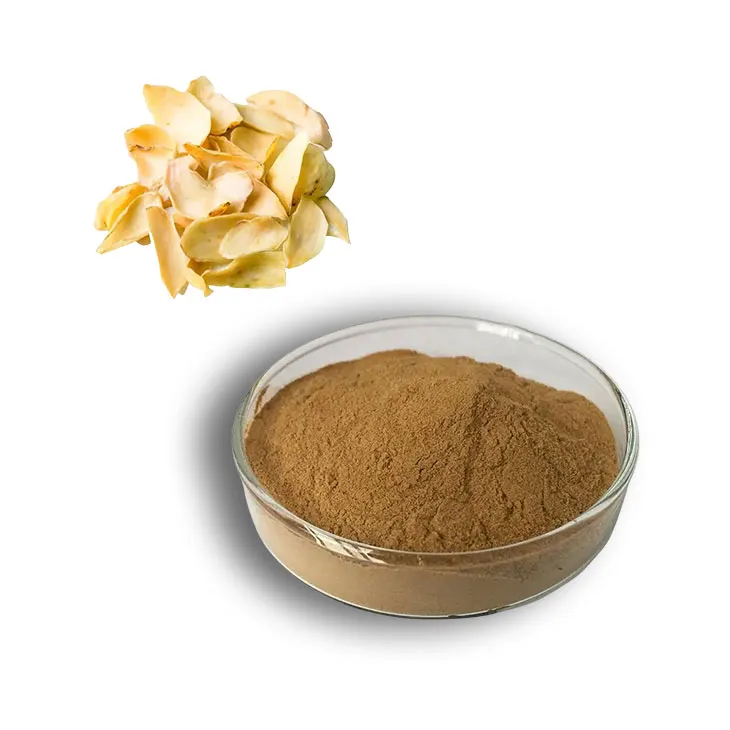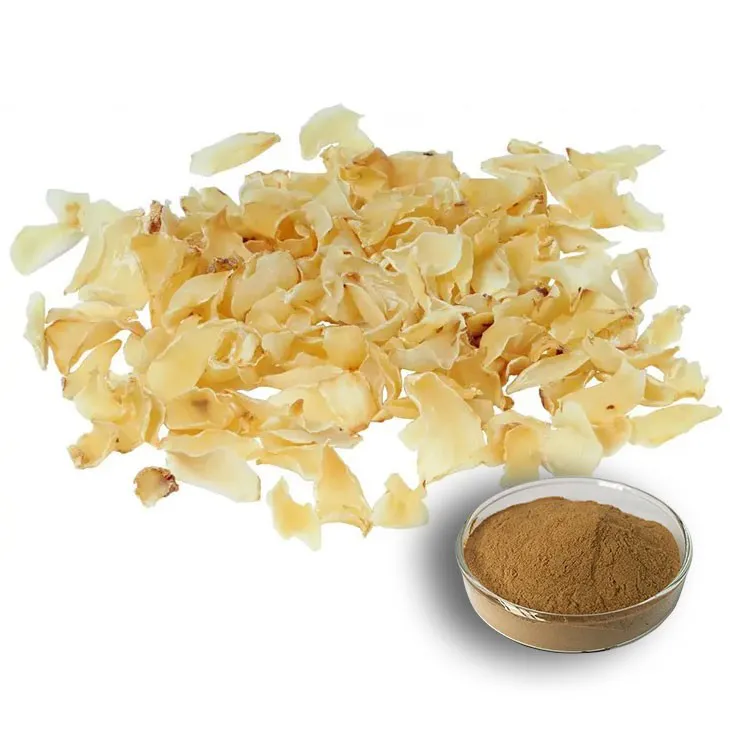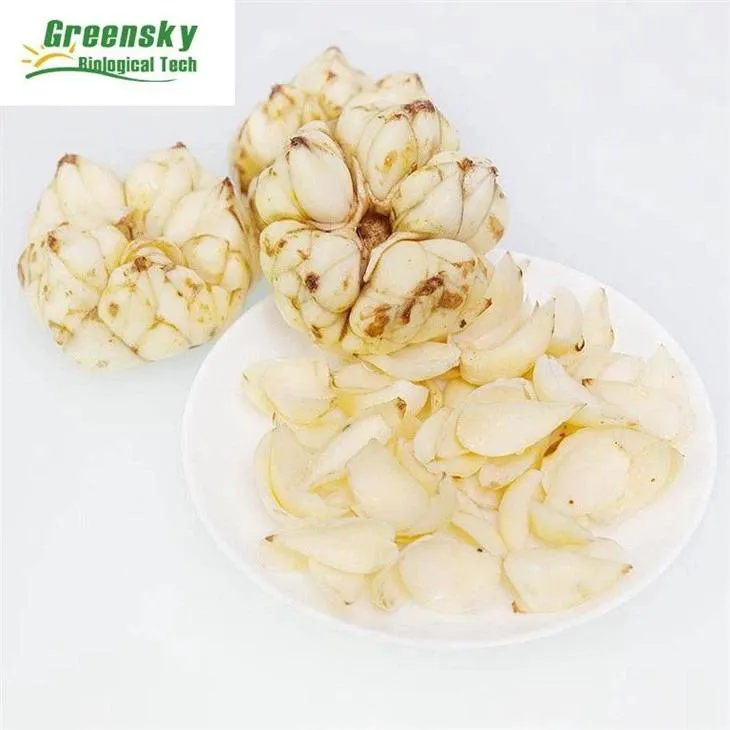- 0086-571-85302990
- sales@greenskybio.com
Lily Extract: The New Darling of Beauty Routines.
2024-11-13

1. Introduction to Lily extract in Beauty
In the ever - evolving world of beauty, new ingredients are constantly emerging. Lily extract has recently emerged as a star ingredient in beauty routines. It is sourced from lilies, which are known for their elegance and beauty in the botanical world. However, it is not just their aesthetic appeal that has made them relevant in the beauty industry; it is their remarkable properties that benefit the skin.

2. Moisturizing Properties
2.1 How it Works
One of the key aspects of Lily extract in beauty is its moisturizing ability. The skin is constantly losing moisture through evaporation and other processes. Lily extract contains substances that can form a protective layer on the skin. This layer helps to reduce the rate of moisture loss, much like a natural occlusive. For example, it contains polysaccharides that have a high water - holding capacity. These polysaccharides bind to water molecules and keep them on the skin's surface, providing long - lasting hydration.2.2 Comparison with Other Moisturizers
When compared to common synthetic moisturizers, lily extract offers a more natural approach. Synthetic moisturizers may sometimes cause irritation or clog pores in some individuals. In contrast, lily extract is generally well - tolerated by different skin types. It is also a more sustainable option as it is derived from a plant source. For instance, petroleum - based moisturizers have a significant environmental impact during their extraction and production, whereas lily extract is a more eco - friendly choice for those concerned about both their skin and the environment.
3. Whitening Function
3.1 Mechanisms of Whitening
The whitening function of lily extract is another aspect that has attracted attention in the beauty world. It works through multiple mechanisms. One of the main ways is by inhibiting the production of melanin. Melanin is the pigment responsible for skin color, and excessive melanin production can lead to dark spots and an uneven skin tone. Lily extract contains certain compounds that can interfere with the enzymes involved in melanin synthesis, such as tyrosinase. By reducing the activity of these enzymes, it can effectively lighten the skin tone.3.2 Safety and Efficacy
In terms of safety, lily extract has shown to be relatively safe for topical use. However, it is important to note that skin whitening products should be used with caution, as over - use or improper use can have negative impacts. When used correctly, lily extract - based whitening products can gradually improve the skin tone without causing significant side effects. For example, in clinical trials, participants using lily extract - containing creams showed a visible reduction in dark spots and an overall brightening of the skin tone over a period of several weeks.
4. Antioxidant and Anti - inflammatory Properties
4.1 The Role of Antioxidants
Antioxidant properties are crucial for skin health. The skin is constantly exposed to environmental stressors such as UV radiation, pollution, and free radicals. These free radicals can damage skin cells, leading to premature aging, wrinkles, and other skin problems. Lily extract contains antioxidants such as flavonoids and phenolic compounds. These antioxidants can neutralize free radicals, preventing them from causing cellular damage. For example, flavonoids in lily extract can donate electrons to free radicals, making them less reactive and thus less harmful to the skin.4.2 Anti - inflammatory Effects
In addition to its antioxidant properties, lily extract also has anti - inflammatory properties. Inflammation in the skin can be caused by various factors, including allergens, irritants, and infections. Chronic inflammation can lead to skin conditions such as acne, eczema, and psoriasis. Lily extract can help to reduce inflammation by suppressing the production of inflammatory mediators in the skin. For instance, it can inhibit the release of cytokines, which are proteins involved in the inflammatory response. This anti - inflammatory effect can soothe irritated skin and help to maintain a healthy skin barrier.
5. Application in Beauty Products
5.1 Skincare Products
Lily extract is widely used in various skincare products. In moisturizers, it enhances the hydration effect, making the skin feel soft and supple. In whitening creams, it helps to improve the skin tone. For example, many high - end moisturizing creams now include lily extract as a key ingredient. It can also be found in serums, where its antioxidant and anti - inflammatory properties are maximally utilized. These serums are often applied before moisturizers to provide an extra layer of protection and nourishment to the skin.5.2 Makeup Products
Even in makeup products, lily extract is making its mark. In foundations, it can provide additional skincare benefits while also improving the texture of the product. It can help the foundation to blend more smoothly on the skin and give a more natural finish. Some lipsticks also contain lily extract to keep the lips moisturized and prevent them from drying out during wear.6. Safety and Sustainability
6.1 Safety for Skin
As mentioned earlier, lily extract is generally safe for skin use. However, like any ingredient, there may be some individuals who are allergic to it. It is important for manufacturers to conduct proper allergen testing and for consumers to patch - test new products containing lily extract. In general, when used in appropriate concentrations, it has shown to be a beneficial ingredient without significant adverse effects.6.2 Sustainability Aspects
The sustainability of lily extract is also a notable factor. Lilies are a plant - based resource, and when sourced responsibly, they can be a sustainable ingredient. Many companies are now focusing on sustainable sourcing of lilies, ensuring that they are grown in an environmentally friendly manner. This includes using organic farming methods, reducing water usage, and minimizing the use of pesticides. By choosing lily extract - based beauty products, consumers can contribute to a more sustainable beauty industry.7. Future Prospects in the Beauty Industry
Given its multiple benefits, it is likely that lily extract will gain even more popularity in the beauty industry in the future. As consumers become more aware of natural and sustainable ingredients, the demand for lily extract - based products is expected to rise. Research on lily extract is also ongoing, with the potential for new applications and improved formulations. For example, scientists may discover new compounds within lily extract that have additional skin - beneficial properties. Additionally, as the beauty industry continues to expand globally, lily extract may find its way into more international markets, reaching a wider range of consumers.
FAQ:
What are the main benefits of lily extract in beauty routines?
Lily extract has multiple benefits in beauty routines. It has moisturizing ability which can keep the skin hydrated. Its whitening function can brighten the skin tone. Also, it has antioxidant and anti - inflammatory properties to protect and soothe the skin.
How does lily extract keep the skin hydrated?
The exact mechanism by which lily extract keeps the skin hydrated may be related to its chemical composition. It likely contains certain substances that can help the skin retain moisture, but specific details may require further scientific research.
Is lily extract safe for all skin types?
Generally, lily extract is considered safe for most skin types. However, as with any ingredient, there may be individual sensitivities. It is advisable to do a patch test before using products containing lily extract extensively, especially for those with very sensitive skin.
Can lily extract really whiten the skin?
Lily extract has a whitening function which can help brighten the skin tone. This is likely due to its ability to inhibit the production of melanin or some other mechanisms related to skin pigmentation, but the degree of whitening may vary from person to person.
Why is lily extract considered sustainable?
The sustainability of lily extract may be related to the lily plant's growth characteristics and cultivation methods. For example, if the lily is easily cultivated with low environmental impact, and its extraction process is energy - efficient and resource - conserving, then it can be considered sustainable.
Related literature
- The Efficacy of Lily Extract in Skincare: A Comprehensive Review"
- "Lily Extract: Properties and Potential in the Beauty Industry"
- "Sustainable Beauty Ingredients: The Case of Lily Extract"
- ▶ Hesperidin
- ▶ Citrus Bioflavonoids
- ▶ Plant Extract
- ▶ lycopene
- ▶ Diosmin
- ▶ Grape seed extract
- ▶ Sea buckthorn Juice Powder
- ▶ Fruit Juice Powder
- ▶ Hops Extract
- ▶ Artichoke Extract
- ▶ Mushroom extract
- ▶ Astaxanthin
- ▶ Green Tea Extract
- ▶ Curcumin
- ▶ Horse Chestnut Extract
- ▶ Other Product
- ▶ Boswellia Serrata Extract
- ▶ Resveratrol
- ▶ Marigold Extract
- ▶ Grape Leaf Extract
- ▶ New Product
- ▶ Aminolevulinic acid
- ▶ Cranberry Extract
- ▶ Red Yeast Rice
- ▶ Red Wine Extract
-
Cat Claw Extract
2024-11-13
-
Cassia Seed Extract
2024-11-13
-
Thunder God Vine Extract
2024-11-13
-
Grapefruit Seed Extract Powder
2024-11-13
-
Apricot Powder
2024-11-13
-
Berberis aristata Extract
2024-11-13
-
Maitake Mushroom Extract
2024-11-13
-
Andrographis Paniculata Extract Powder
2024-11-13
-
Oyster Mushroom Extract Powder
2024-11-13
-
Citrus bioflavonoids
2024-11-13





















